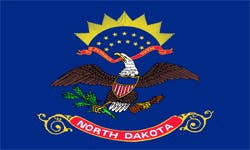Original Medicare includes Part A, hospital insurance, and Part B, medical insurance. It does not include prescription drug coverage. For that you need Medicare Part D. On this page, we explain your Medicare prescription drug plan options in North Dakota.
How Medicare Part D works in North Dakota
You have two ways to get Medicare prescription drug coverage in North Dakota:
- A standalone Medicare Part D plan
- A Medicare Advantage Prescription Drug plan (MA-PD)
You may add a standalone Part D plan to either Original Medicare or a Medicare Advantage (MA) plan that does not include prescription drug coverage. (Around 10% of MA plans do not cover prescriptions.)
MA-PD plans are sometimes called all-in-one plans, because they offer the same coverage you get with both Original Medicare and a Part D prescription drug plan.
Please note that you cannot have both a standalone Part D plan and a Medicare Advantage Prescription Drug plan. If you sign up for an MA-PD and then join a standalone plan, you will be kicked out of your Advantage plan and back into Original Medicare.
Who qualifies for Medicare Part D in North Dakota?
You qualify for Medicare Part D in North Dakota if you have Medicare Part A and/or Part B and live in the plan's service area.
Most people – around 85% – first become eligible for Medicare when they turn 65. Please note that, unless you are receiving Social Security benefits at least 4 months before your 65th birthday, you must sign up for Medicare.
The remaining 15% of Medicare beneficiaries are eligible due to a disability or medical condition. If you receive Social Security disability benefits for 24 months, you're automatically enrolled in both Parts A and B in month 25.
Nobody gets automatic Part D enrollment, even if they collect Social Security benefits. You must always choose to join a prescription drug plan.
When can you join a Medicare prescription drug plan in North Dakota?
The Medicare program restricts Part D plan enrollment to specific times known as enrollment periods.
Your Initial Enrollment Period (IEP) lasts for 7 months, beginning 3 months before the month you first become eligible for Medicare. For example, if your 65th birthday or 25th month of disability benefits falls in July, your IEP begins on April 1 and ends on October 31. If you sign up for Medicare Part A and/or B during your Initial Enrollment Period, you have until it ends to also join a Part D or MA-PD plan.
The General Enrollment Period opens every year on January 1 and closes on March 31. It is available to anyone who is eligible for Medicare but did not enroll during their IEP and does not qualify for a Special Enrollment Period (SEP). Your options during General Enrollment are limited to enrolling in Medicare Part A and/or B. However, once you do that, you may enroll in a Part D plan from April 1 through June 30.
All current Medicare beneficiaries may participate in the Annual Enrollment Period (AEP). It runs every year from October 15 through December 7. During AEP, you may make any changes to your Medicare coverage that you wish, including joining a new prescription drug plan.
The Medicare Advantage Open Enrollment Period is limited to beneficiaries who belong to an Advantage plan. It runs from January 1 through March 31. Your options during Open Enrollment are limited to changing to a new Advantage plan or returning to Original Medicare. However, if making that change results in you losing your prescription drug coverage, you may also enroll in a standalone Medicare Part D plan.
If you experience certain life changes, such as losing your current prescription drug coverage or moving to a new address, you may qualify for a Special Enrollment Period. You can find the full list of qualifying special circumstances on Medicare.gov.
How to compare Medicare Part D plans in North Dakota
Medicare Part D plans in North Dakota vary as to coverage and cost, so you need to compare your options carefully. The first thing you should look at is the drug formulary.
All prescription drug plans – even MA-PDs – have a formulary, which is simply a list of covered medications. If a plan's formulary does not include one or more of your prescriptions, keep looking until you find one that does. If none of the Part D plans in your area cover one of your prescriptions, talk to your doctor about your options, such as an alternative medication or filing an exception request with the plan.
While reviewing the formulary, take a look at the drug tiers. This gives you an idea of what a medication will cost under a particular Part D plan. Drugs on the lower tiers cost less than those on the higher tiers.
Your out-of-pocket costs under Medicare Part D include:
- Annual deductible
- Monthly premiums
- Copays and/or coinsurance
Make sure a low monthly premium isn't hiding higher costs elsewhere. Again, you can estimate your copays by checking which tiers your prescriptions are on.
Medicare beneficiaries who have limited income and resources may qualify for Extra Help, a program that helps pay a variety of prescription drug costs. If you think you meet the requirements for Extra Help but do not receive written notification from either Medicare or Social Security that you qualify, call your plan.
Do you have to sign up for prescription drug coverage in North Dakota?
No, Medicare Part D is not mandatory in North Dakota. However, if you go 63 days or more without creditable drug coverage, you will owe the Part D late enrollment penalty once you do sign up for a prescription drug plan. You will have to pay this penalty for the entire time you have Medicare Part D coverage. Creditable means a plan that is equal to Medicare in terms of both cost and coverage.
Speak with a Licensed Insurance Agent
M-F 8:00am-10:00pm | Sat 9:00am-6:00pm EST
